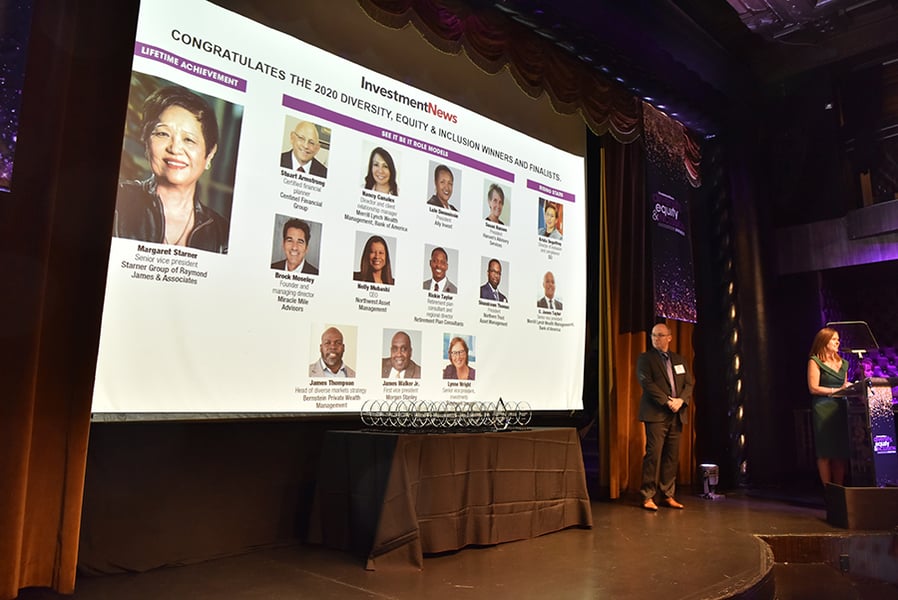

In an InvestmentNews Diversity, Equity & Inclusion Awards panel Tuesday on rejuvenating DEI efforts, participants described the most effective methods that attract new employees and boost retention.
Businesses need to have diverse leadership that is fully invested in DEI efforts at every level from business strategy to product development. That was the upshot of the panel discussion featuring Lule Demmissie, CEO of eToro USA; Kristi Rodriguez, senior vice president of Retirement Institute at Nationwide Financial Services Inc.; and Leo Tucker, managing partner at Northwestern Mutual Co.
“Tone at the top has been the most effective,” said Tucker. “Make sure every leader in your organization is bought into this.” If the leaders of a business are not involved, it’s going to be a huge roadblock to the success of a firm, he said.
The panelist referenced the popular musical "Hamilton" by Lin-Manuel Miranda, saying that diversity needs to be in “the room where it happens,” meaning the C-suite, the boardrooms or the room where top decisions are being made.
The reality is that businesses cannot create diversity without diversity,” Demmissie said. “Without diversity, there is no innovation and without innovation there is no relevance. Period.”
Leaders can get started by ensuring their networks are filled with diverse individuals — from skin color to diversity of thought.
“How diverse is your LinkedIn network?” Demmissie said. “If your rolodexes are not diverse, I promise you you’re not hiring diverse. It’s not just institutional metrics, but personal metrics that we can put upon ourselves.”
Firms need to ensure the individuals interviewing candidates are diverse, too. “[DEI] needs to be a component in the recruitment process, not just an aspiration,” Demmissie said.
Rodriguez suggests leaders think about what they are doing internally to transcend DEI efforts into the communities they serve. For example, Nationwide created a concerted effort in its recruitment to sustain women and women of color in technology roles since there is a huge gap of women working in tech.
Nationwide created groups within the firm like its Social Justice Task Force to create financial apprentice programs for underserved communities and its Financial Alliance of Racial Equity initiative.
“We surveyed college students who are at historically black colleges as well as professionals, and one data point stood out that I always say still gives me goosebumps, because on both sides 90% said they would face discrimination because of their skin color,” she said. “It's also important to talk about metrics on how we're going to change that.”
Leaders need to think about how they will make an impact to change the trajectory of having diverse employees a part of the full ecosystem of the firm, Rodriguez said. “The natural byproduct will be creating opportunities in underserved communities to change the wealth gap,” she said.

The leadership changes coming in June, which also include wealth management and digital unit heads, come as the firm pushes to offer more comprehensive services.

Strategist sees relatively little risk of the university losing its tax-exempt status, which could pose opportunity for investors with a "longer time horizon."

As the next generation of investors take their turn, advisors have to strike a fine balance between embracing new technology and building human connections.

IFG works with 550 producing advisors and generates about $325 million in annual revenue, said Dave Fischer, the company's co-founder and chief marketing officer.

Five new RIAs are joining the industry coalition promoting firm-level impact across workforce, client, community and environmental goals.
RIAs face rising regulatory pressure in 2025. Forward-looking firms are responding with embedded technology, not more paperwork.
As inheritances are set to reshape client portfolios and next-gen heirs demand digital-first experiences, firms are retooling their wealth tech stacks and succession models in real time.
